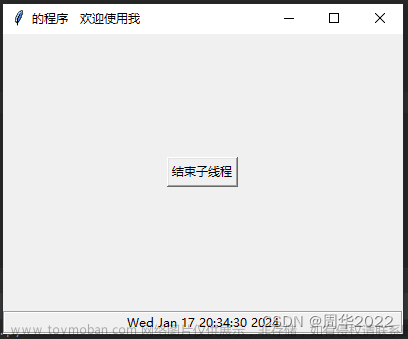使用 threading.Event 对象关闭子线程
Event 机制工作原理:
Event 是线程间通信的一种方式。其作用相当于1个全局flag,主线程通过控制 event 对象状态,来协调子线程步调。
使用方式
- 主线程创建 event 对象,并将其做为参数传给子线程
- 主线程可以用set()方法将event 对象置为true, 用clear()方法将其置为false。
- 子线程循环体内,检查 event 对象的值,如果为 True, 则退出循环。
- 子线程,可使用 event.wait() 将阻塞当前子进程,直至event 对象被置为true.
event 类的常用方法
- set() 设置 True
- clear() 设置 False,
- wait() 使进程等待,直到flag被改为true.
- is_set() 查询 event 对象,如被设置为真,则返回True, 否则返回False.
class StartDecisionTread(threading.Thread):
def __init__(self, ins):
super(StartDecisionTread, self).__init__()
self.ins = ins
self.stop_event = threading.Event()
def run(self):
while not self.stop_event.is_set():
print(1)
model_file_path = rf'1.db'
if not os.path.exists(model_file_path):
self.stop_event.set()
#Python学习交流群:711312441
thread1 = StartDecisionTread(1)
thread1.start()
子线程执行其任务循环,它每次循环都会检查event对象,该对象保持 false,就不会触发线程停止。文章来源:https://www.toymoban.com/news/detail-839371.html
当主线程调用event对象的 set() 方法后,在子线程循环体内,调用event对象is_set()方法,发现event 对象为True后, 立即退出任务循环,结束运行。文章来源地址https://www.toymoban.com/news/detail-839371.html
到了这里,关于python多线程中:如何关闭线程?的文章就介绍完了。如果您还想了解更多内容,请在右上角搜索TOY模板网以前的文章或继续浏览下面的相关文章,希望大家以后多多支持TOY模板网!








